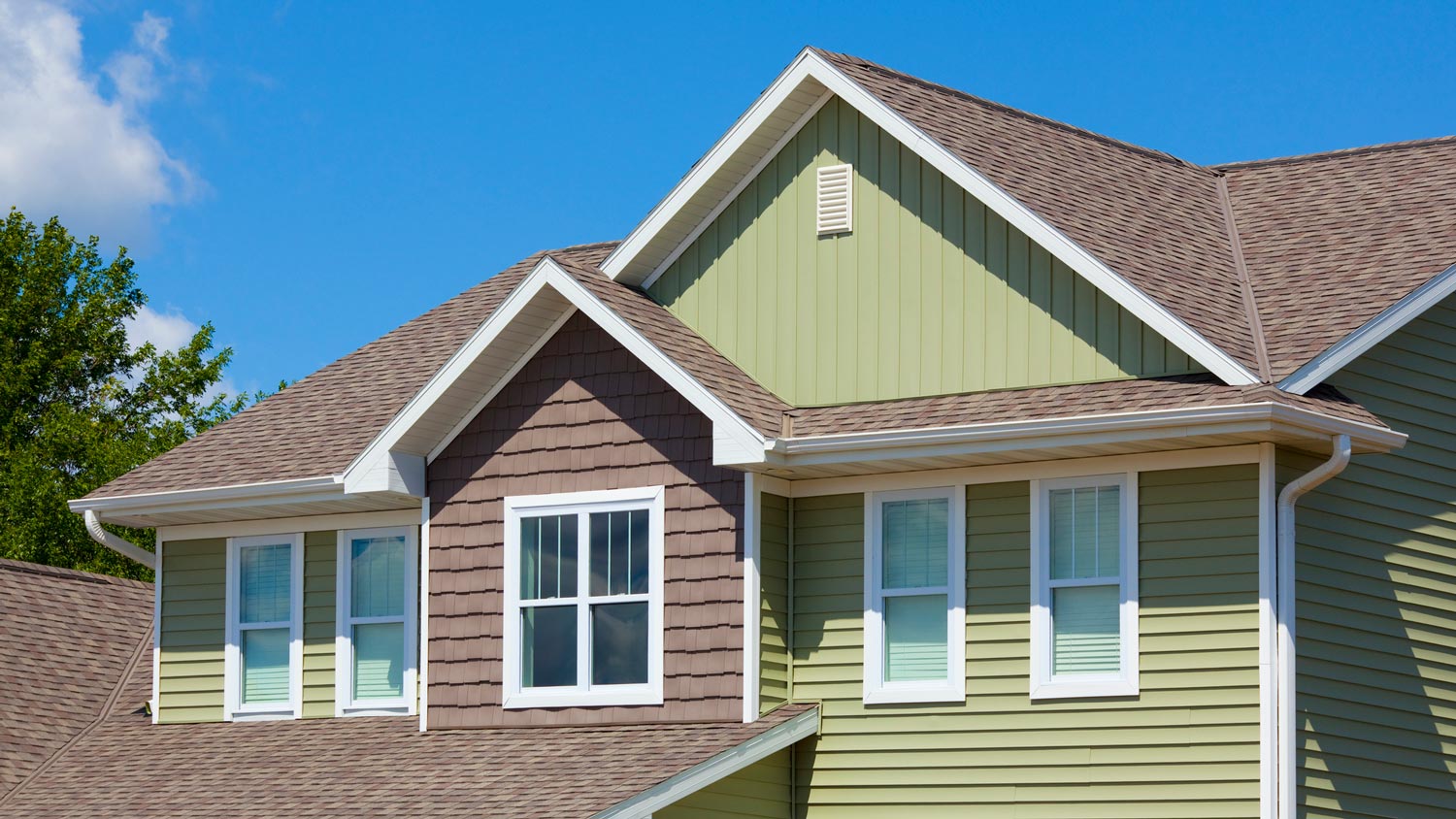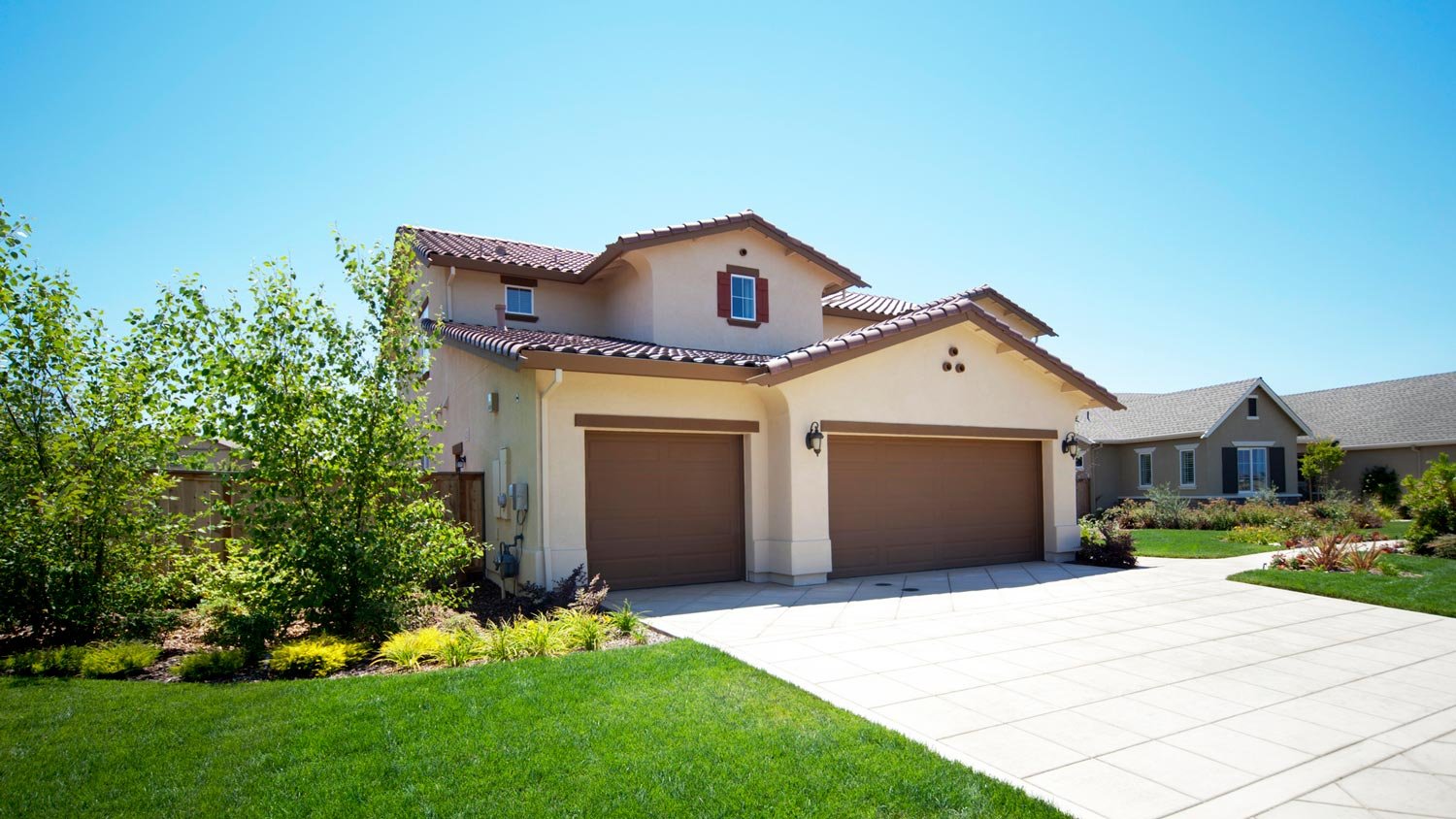Stucco Siding vs. Vinyl Siding: Pros, Cons, and Costs
Time to finally decide on the best siding


Stucco is a more durable material and can last up to 60 years or more.
Vinyl siding is more budget-friendly—it costs just $3 to $12 per square foot, compared to $14.50 per square foot for stucco.
Both materials can work in a wide range of climates.
Vinyl siding is easier to install yourself and is more customizable.
The outward appearance of your home is a major factor not only in its curb appeal but also in its potential resale value. Whether you’re building your forever home or considering an upgrade, understanding the difference between stucco siding and vinyl siding can help you make the best decision. This will depend heavily on where you live and what works best for your climate and lifestyle.
When comparing stucco versus vinyl siding, weighing the pros and cons of each can make this impactful decision an easy one. Below, we’ve broken down the basics of each material, as well as which one wins out in a variety of categories.
Stucco Siding Pros and Cons

One of the most common traditional building materials, stucco is used around the world, with its earliest existence in Greek construction in 1400 B.C. Today, in its most basic form, it’s a type of plaster made of Portland cement, sand, and water.
Once combined, it makes a paste that you can apply to the outside of structures directly over brick, stone, concrete, or hollow tile. What you need to know about stucco is that, just like any material, it comes with its own benefits and drawbacks.
Pros
More durable: Because it’s applied in a series of layers, stucco is more durable and longer-lasting than most siding materials. It can withstand harsh climates and lasts, on average, 60 to 100 years.
More timeless: Stucco’s unique characteristics make it a classic choice across the board. It’s beautiful and simple but adds character that vinyl lacks.
Cons
Higher cost: Stucco is pricier than vinyl siding at $14.50 per square foot, on average. This is almost $2 more than the top of the price range for vinyl siding installed.
More maintenance: If you live in a region with a lot of sunlight, stucco may fade over time and require more frequent paint touchups. Any cracks that form in the stucco also need to be addressed immediately by a local stucco contractor before they become widespread.
Vinyl Siding Pros and Cons

Vinyl siding is a plastic made from polyvinyl chloride (PVC) resin that can be applied to the exterior of your home over rigid insulation. It comes in two styles—horizontal and vertical—and is available in a wide variety of colors, textures, and edge selections.
It’s a popular material because it’s more durable and less expensive than other types of house siding, such as wood, fiber cement, or aluminum siding.
Pros
More customizable: Vinyl siding offers more options if you want siding that resembles other materials or comes in a wide variety of colors, styles, and profiles.
Lower cost: Vinyl siding is significantly less per square foot installed than stucco at $6.50 to $12.50. It’s a budget-friendly option for homeowners across the country since it takes less time to install or repair.
Cons
Less durable: For all of its perks, vinyl siding is less durable than stucco siding by a wide margin. So how long does vinyl siding last? About 20 to 40 years, which is significantly less than stucco. It can also be more susceptible to water leaks, so it’s important to have proper insulation installed before the panels go up.
Fading: Vinyl is more prone to fading over time, especially if you go for a darker color. Sun exposure is inevitable for exterior siding, so if you live in a region with constant sunlight, you’ll want to consider fading when selecting a color.
Stucco Siding vs. Vinyl Siding Key Features
Your home’s curb appeal is important—it’s the first thing visitors or potential buyers see, and first impressions are everything. But if you’re dealing with decision fatigue and need help picking between stucco and vinyl siding, have no fear—we’re here to help.
Below, we’ll point out the differences in each and determine which material has the upper hand across different categories.
Appearance
The type of siding that’s more visually appealing really depends on your personal preference. If you like a more traditional, historical look with more texture and simplicity, stucco siding may be the best option for you. If you like a more modern exterior that can mimic the look of wood or tile, vinyl siding is a better choice.
Most visually appealing: Tie
Options and Customizations
When it comes to color, both stucco and vinyl siding can take just about any color you prefer, though for best results, they each need to have the color mixed in the material. If you tend to like a bit more texture, stucco siding would make the most sense for the exterior of your home.
Vinyl siding, however, can come in different shapes and profiles, from clapboard and shake to shingle tiles and vertical panels. Stucco, on the other hand, can only look like the material it’s made of.
Most customizable: Tie
Durability
Although both materials are durable, stucco is applied in thicker layers that are more resistant to harsh weather. Stucco siding can resist wind gusts up to 80 miles per hour, while vinyl siding can withstand gusts up to 70 miles per hour.
With its thickness and ability to resist everything from hail to heavy rain and strong winds, stucco can last anywhere from 60 to 100 years. This greatly outlasts vinyl siding, which typically lasts 20 to 40 years.
Most durable: Stucco
Price
If staying under budget is your top priority, vinyl siding may make the most sense for you. This material typically costs anywhere from $3 to $12 per square foot, whereas stucco siding costs, on average, $14.50 per square foot since it’s more labor-intensive.
Even the most expensive vinyl options will cost less than basic stucco, which is something to keep in mind if you have a specific dollar amount you want to spend.
Lowest cost: Vinyl
Ease of Installation/DIY-ability
Because it consists of pre-made planks, vinyl siding is a much easier material to install yourself, whether you’re a confident DIYer or a beginner with a group of friends who are willing to put in some elbow grease. Vinyl planks are easier to install and go up quicker, and you can even mount them to brackets yourself.
Stucco, on the other hand, has to be applied in layers to be effective and often requires the skill of an experienced professional who can do it right the first time.
Easiest to repair: Vinyl
Maintenance

The good news is that both stucco and vinyl siding are low-maintenance materials. Stucco problems are generally few and far between, although a visible crack should cause concern and be repaired as soon as possible.
Because it can fade in the sun, stucco also benefits from frequent paint touchups. Vinyl simply requires an annual cleaning, which is a fairly painless task that you can do yourself.
Most low-maintenance: Vinyl
Sustainability
Vinyl siding is more sustainable because it’s a recyclable material. In its production, there’s no manufacturing waste, and its ease of installation helps save energy. Plus, vinyl’s average lifespan is long compared to other materials, so you won’t have to replace it as often.
Most sustainable: Vinyl
Location
Although stucco and vinyl siding are both available in homes all over the country, vinyl siding is more viable in terms of location. Vinyl siding is a naturally insulated material that can help regulate indoor temperature, no matter the climate. Alternatively, stucco is better suited for warm, dry climates. Stucco is susceptible to moisture, and cold climates with regular freeze-thaw cycles can lead to trapped moisture, cracking, and water damage.
Most location-friendly: Vinyl
ROI and Resale Value
The resale value of your home, whether it has stucco siding or vinyl siding, may largely depend on the region you live in. However, based on a report by Remodeling Magazine, vinyl siding has an 80% return on investment (ROI). This makes vinyl siding more appealing for resale, but consider your location and what siding styles you see most commonly used.
Better for resale: Vinyl
Which Type of Siding Is Best?
Based on the results from the categories above, it’s easy to see why vinyl is the most popular siding option. It’s budget-friendly, easy to install and replace, better for the environment, customizable, and it’s not going out of style any time soon.
However, if you’re still unsure which type of siding is best for you, you can contact siding contractors near you to get opinions from an expert or two. A professional can even take a look at your home to determine which material makes the most sense for your needs and preferences.





- Learn the Pros and Cons of Vinyl Siding
- The Pros and Cons of Different House Siding
- Wood Siding vs. Vinyl Siding: Pros, Cons, and Costs
- How Long Does Vinyl Siding Last?
- Aluminum vs. Vinyl Siding: A Comparison Guide
- How to Install Vinyl Siding Yourself
- Fiber Cement Siding vs. Vinyl Siding: What's The Better Choice?
- 7 Low-Maintenance Siding Options for Your Home
- Pros and Cons of Painting Vinyl Siding: What to Consider
- 12 House Siding Options to Boost Curb Appeal










